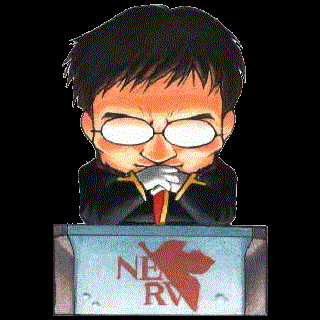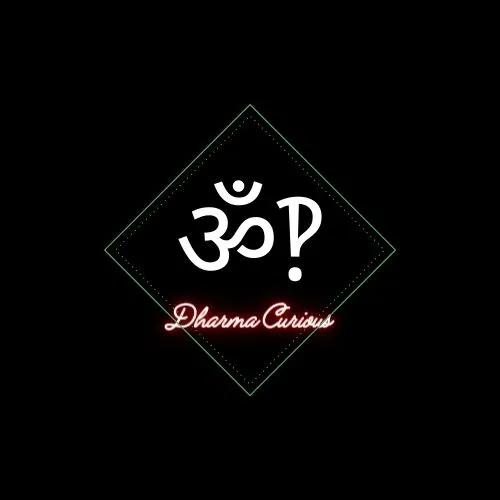Aand that’s Numberwang!
This joke has lived in my head quietly for at least a decade.
I have come to conclude that probably, a terrible amount of these inconsistencies is to make it artificially hard, to “keep out the lower classes” from thinking, or sth. Similar to how the white population in the US made living in suburbs artificially difficult (car dependency, HOAs, …) to keep the “poor” (a.k.a. black) people out. it’s thinly veiled racism.
It’s dangerous making conclusions from big assumptions.
Is the kind of reasoning that leads to bias.
Or maybe it’s just a way to overlay multiple levels of information over the same circle.
id argue its also thinly veiled racism to imply black people are too stupid to understand clocks
Base 12 you filthy casual
at least it isn’t base decimal
Every base is base 10 if you write it in its own base
I’m from c/all and WTF does this mean? I understand base 10, 2, and 12 and the concept of a base in general but…wut???
The number 2 in base 2 is 1x2 + 0x1 and is written as 10.
The number 3 ib base 3 is 1x3 + 0x1 and is written as 10.
The number 7 in base 7 is 1x7 + 0x1 and is written as 10.
The number 268 in base 268 is 1x268 + 0x1 and is written as 10.
c/eli5
i got you, so basically, in a “base” system, each given “number position” or place value, as we call it holds the value equivalent to it’s base, so in base ten, the first position, holds 0-9, the second one holds 0-9 as well, but it’s tacked on the beginning of the last place value, so it’s an additive system.
In binary for example, 00 would be 0 in base 10. 01, would be 1 in b10, 10 would be 2 in b10, and 11 would be 3 in b10. This is because in binary, the first position is a value of 1, the second is 2, the third is 4, the fourth is 8, etc. It doubles everytime you add one more place value. So in binary you’re representing any given number, from the most mathematically optimal way to create that number, given a set of values. The 0 or 1 in that place just denotes whether or not that value is “present”
The same thing happens in base 10, or base 12, or base 8. With base 10 it’s just a lot more intuitive to us.
The joke here is that in base 268, that 10 in base 10, is actually a representation of the highest possible value, in any given base system. So technically in base 268, you would use 0-267 (im using base 10 here as a reference, this wouldn’t be done in base ten obviously, this is why i really like binary as an example, because it’s mathematically simple, and very intuitive to comprehend), and when you reach 268, you would roll over, and add an additional place value. Making it 10.
This is true for every base system, due to how base 10 is represented in those systems, it’s a confusing joke because the human brain is wired to think about it base 10, when it isn’t.
Oh I’m sorry, I’m an engineer and learned about bases in college. I was just saying how the above comment was pretty much exactly what I’d expect to see in a c/eli5 post! Super succinct
Oh boy, I am not sure I have the vocabulary to explain this effectively. But I will try!
Okay so normally when we say “base 10” or “base 2”, the number in that description is itself in base 10, right? Like the “10” in “base 10” means the number of fingers most humans have (including thumbs), and the “2” in “base 2” means the number of things in a pair.
You will note, though, that for that “10” to mean what it means, and that “2” to mean what it means, they must be in base 10 themselves. A pair of things in base 2 is 10 things, right? So then if you write the “2” in “base 2” in base 2, it’s “base 10”. And this holds true for any base. How do you write a dozen in base 12? 10. So base 12, written in base 12, is base 10.
There is an old unix calculator program called bc where one can change the input and output base.
If you change the input base and then the output base strange things happen as bc interprets the output base number in the input base .
ibase=2 obase=10 The output base is now 2 (in base 10)Nailed it. This was a perfect explanation. Thank you!
yes that is why I specified decimal, I am a jan misali enjoyer
Love Jan misali, but I disagree with him that base 6 is preferable. Base 12 is best base.
Too much maths 🥴
This is !mathmemes@lemmy.blahaj.zone.
This guy bases.
Actually, they used base 60.
It kind of checks out that the people that made the first fully functional writing system were also the kind of massive nerds (complimentary) to do their maths in base 60
Still doesn’t explain why the clock goes from 1 to 12, and not 0 to 11.
It does. 0-11 and 1-12 contain the same (12) amount of hours. Saying “twelve thirty two” just rolls off the tongue easier than “zero thirty two” or “o thirty two”.
Not to mention zero is a much later invention than the sexagesimal system.
Also here’s a clock with zero on it.

here’s a clock with zero on it
I like this clock very much and want one in my home.
Yes except why is no single digit except for 0 zero-padded?
Okay, now this clock is !mildlyinfuriating@lemmy.world
Also 12 can be divided by many factors (1;2;3;4;6;12) where as 11 is a prime number.
The day starts at zero, not 12. 12 is “Noon” ie halfway through the day. The clock starts at 12 because it’s more practical than inscribing 24 divisions in a circle. And the 6 doesn’t “mean 30”, it’s simply the hour marking at the bottom of the circle. Also, the clock was invented after the 24 hour day, not the other way around.
And inb4 “I bet you’re fun at parties”. I’m all for “this logic is ridiculous” jabs, but this is just misrepresenting everything to make it sound stupid. Everything sounds stupid when you purposefully get it wrong.
12 is the zero point, it’s just indexed one off, because there isn’t a 00:00 timeslot in 12 hr time, so it needs to be 12.
It has to do with 24hr time being zero indexed, and 12hr time being 1 indexed, so it’s slightly offset at the point of day changeover.
I mean the day does start at “the 12” on the face of the clock. And 30 minutes is at the 6 on the clock. I get what you’re saying but come on they both make sense.
You must be fun at parties 😉 jk I’d party with you! I’m not very fun at parties tho.
Well to add some more pedantry to this conversation, only one of the explanations makes sense, the other is obtuse for comic effect.
Let’s all have an awful party together 🥳
In the US the day starts at 12 AM; there is no zero.
Let me introduce you to something known as military time (which, yes, even exists in the US)…
The most unlogical thing. If it starts at 12 AM, the next hour is 1 PM, right?
I prefer midnight and noon, or a 24h clock.“midnight” and “noon” for sure.
… And now I’m thinking about all those super heros and villains named “midnight” and their logical counter-characters “noon”
the 12 is a zero point, it’s just listed as 12.
The most unlogical thing. If it starts at 12 AM, the next hour is 1 PM, right?
No, ante meridiem and post meridiem say whether it’s before or after noon, thus, after 12:59 AM comes 1:00 AM.
https://en.m.wikipedia.org/wiki/12-hour_clock#Confusion_at_noon_and_midnight
I mean when looking at numbers:
. . . . . . 1100pm 1159pm 1200am 1259am 0100am … 1100am 1159am 1200pm 1259pm 0100pm … 230024h 235924h 000024h 005924h 010024h … 110024h 115924h 120024h 125924h 130024h … Too much confusion.
Even NIST (National Institute of Standards and Technology in the US) suggests:
To avoid ambiguity, specification of an event as occurring on a particular day at 11:59 p.m. or 12:01 a.m. is a good idea, especially legal documents such as contracts and insurance policies. Another option would be to use 24-hour clock, using the designation of 0000 to refer to midnight at the beginning of a given day (or date) and 2400 to designate the end of a given day (or date).
I didn’t want to imply that the use of the 12 hour system should be prefered in any way. Just that the division into AM and PM follows some logic. Its just the numbering 12, 1, 2,… that’s weird.
I like your reply. I think it’s a source of all problems.
The clock is two dials at the same time superimposed on another. There’s one 12 hour dial and one 60 minute dial. To save space and material they are combined into one.
The clock starts at 12 and not 0 because humanity didn’t have the concept of 0 when we invented the 12 hour clock
To akshually your akshually, the day DOES start at 12 in places that use a 12 hour clock, since midnight is 12am and there is no 0am.
Also this meme is not a serious criticism of clocks meant to be taken literally, so taking it as such so you can debunk it just makes it look like you’re trying too hard to appear smart.
to akshually your actually post, the 12 IS zero. noon, as in midday isn’t zero, which is a sort of arbitrary decision. That’s the differentiating feature between the two systems.
Technically i guess you could count the noon point as 0 also, but that provides ambiguity, so i think it;s better to treat noon as 12, and midnight as 00:00 (but listed as noon) because then it perfectly maps to 24hr time.
Personally, I enjoy this kind of discussion at parties.
You sound fun at parties
You sound stupid when I purposefully get it wrong
fun fact during the si process there was also a proposal to make a minute 100 seconds and an hour 100 minute and a day 10 hours (and adjust the second length so that it still syncs up with the sun ofc) but it never got implemented, probably because auf big clock-manufecturing puts on alu hat
deleted by creator
Citation needed.
More like second means a second division of hour.
deleted by creator
So ancient Mesopotamians used to count on their hands slightly different. They wouldn’t count their thumbs, instead they would count each knuckle with their thumb so, 3 knuckles per finger and 4 fingers each hand
You can do this too - you have the same hands :)
cries in Habsburg
Don’t worry, you can count to higher numbers in sets of 15, with your heroic lordly number of fingers, rather than sets of 12, like I have with my ghastly peasant fingers.
It’s a lot of different things it’s design is based on the sundial, we already had base 12 time
Wikipedia page for base 12, the origin is a fun read and while I can’t say it’s all accurate, the parts I know are
https://www.youtube.com/watch?v=0QVPUIRGthI : reminded me of this, my Dad used to love this!
Thanks for sharing; that was great!
Removed by mod
Incorrect
Decimal time was failed by decimal counting being such ass. Dozenal numbers and dozenal time would be utopia
Try 24-hour time for a month. It’s slightly weird at first solely because 1) everyone else uses 12-hour and 2) you’ve used 12-hour your whole life, but after that it’s great and frankly better than what you use now. Translations between 12-hour time become 100% automatic, so you can use it in your personal life without feeling like you’re switching (you might even get one or two friends to join you). The following are advantages just for you, not accounting for the larger advantages that come when everyone is using it:
- You can drop the AM and PM on digital clocks with no loss of information. It’s a small thing, but this gives me room for a seconds position on the clock on my taskbar. (Side note: given 8 billion people on Earth and given how often time shows up, I feel like these trillions of miniscule savings getting rid of AM and PM might add up to something actually meaningful.)
- You’ll never have that experience where you oversleep during a nap so badly that you get confused if it’s AM or PM.
- Most intervals we usually talk about for things (e.g. “I have school from 6:00 AM to 2:00 PM” or “I have work from 9:00 AM to 5:00 PM.”) do not include midnight in their range (e.g. “I slept from 9:00 PM until 6:30 AM”). Thus, arithmetic is easier because you don’t have to account for the modulus (at worst in the latter example, it’s the same). For example, when I go to school from 06:00 to 14:00, that’s just 8 hours. When I work a 09:00 to 17:00, that’s 8 hours. It’s just the actual arithmetic. It’s currently 10:00 and the assignment is due at midnight? Then I have 14 hours left to get it done. Whereas for 12-hour time, I need to account for the modulus: “okay, there’s x hours on this side of the 12 hours and y hours on this other side; add those” is how I probably do it in my head. Subtracting times is especially nice. For example, if something has been happening since 00:30 and it’s now 13:45, then I just need to subtract 30 minutes from 45 and I immediately have my answer. 1:45 minus 12:45, meanwhile? Nah. This also makes timezones much easier to do mentally. If I have +14 for my time and it’s 06:00, then I know it’s 20:00 there. Trivial. You do lose that sweet spot where something is exactly 12 hours apart, but that’s miniscule compared to how easy everything else is.
- Starting at 00:00 for midnight instead of 12:00 is just so much nicer. 12-hour time has no 0, which to me is just kind of stupid. Namely for aesthetic, intuition, and arithmetic reasons.
- If speaking to someone internationally, intuitively knowing both formats means you don’t even need to think about a conversion (let alone do one at all once you really get it down). Lots of countries use 24-hour time orally and written, and even more use it just in writing.
- Date and time formats use 24-hour rather than 12-hour time, so you can read these automatically instead of needing to convert.
- This one’s very unobjective, but I feel like I’ve been less inclined to go to bed late when dealing with larger numbers. “Oh, it’s just nine” versus now the 20s are “late” and when I really need to start thinking about how and when I’m going to bed. Obviously it’s possible this is just my monkey brain being weird in a specific way and that nobody else would have this, so pay attention to the other reasons instead.
- (Not beneficial to an individual using it on their own as an adult, but I wanted to bring it up.) It’s arguably slightly easier for kids to learn. Kids aren’t up at midnight, and so they don’t really have to care about the clock rolling over while they’re fast asleep (if they do, they get the much more intuitive ‘0’ than ‘12’). On the other hand, the clock rolling over at noon means you as a kid really do need to understand how that works.
It’s just objectively better in most meaningful ways, and like the metric system:
- Its benefits are most evident if you grew up with it and everyone around you uses it.
- Its benefits would still be evident if everyone switched to it but hadn’t grown up with it.
- Even if you didn’t grow up with it and no one else around you uses it, it can still benefit you to use it.
It’s interesting how different people process time. For some, pure numbers make sense, and adjusting to 24-hour time is a trivial matter. But for others such as myself, who came to understand time on analog clocks, we understand time visually, especially by the angles on a clock face.
It’s intuitive to me to “do math” on time by imagining what the angles of the hands would look like in two (or more) instances. If I need to get up by X time, I can glance at a clock and immediately know I need to go to bed by Y in order to get 8 hours of sleep, just by comparing where the clock hands would be in the morning. I rarely have to actually calculate anything, and even when converting between time zones, having an analog clock base means just counting the difference around the circle. Using a digital clock, by contrast, means having to visually interpret those numbers as they would be represented by clock hands. Those clock hand angles represent “the time” to me in a way that numbers on a digital display cannot. I understand 24 hour time, I’ve even used it professionally. But considering that it requires multiple conversions to arrive at the format (visual angles) that my brain uses to understand time, it’s far too much work for me, personally, to use in daily life.
I’m not advocating for or against any particular system, and I hope that others can benefit from the switch you suggest. I just think it’s important to note that some of us have a visual concept of time, and/or don’t easily abstract time onto pure numbers, and that difference can make switching from an analog 12-hour system to a digital 24-hour system more difficult.
I switched to 24 hour time because I work over night and have an inconsistant sleep schedule. It makes it easier to determine how much sleep I got and the exact time of day when waking up.
Is there a lemmy community devoted to the superiority of 24-hour time yet?
Where is it so foreign to use 24 hour format? I thought they were both interchangeable and well known worldwide?
Haha
Remember me when you learn this about the metric system
As is so often the case, wikipedia has a helpful map https://en.wikipedia.org/wiki/24-hour_clock#/media/File:12_24_Hours_World_Map.svg
For all of exclusively 12 hour, exclusively 24 hour, 24 hour in writing but 12 hour in speech, and just using both at random, there are entire regions of the world using that system
I think it’s a US thing.
I use 12h clock when context provides the am/ap variation, 24h otherwise. I have had americans tell me I sound militaristic when I tell them my flight lands at "seventeen fifteen ". I guess they are right, the NATO format for time uses 24h clock.
86,400 is not a perfect cube (or any other power) so unless you change the number of seconds in a day you’re not getting a way to perfectly represent 3 different sized time measurements in the same circle without something like 6=30m/30s
We could just change time… again… to make seconds slightly longer and have there be 85,184 seconds in a day. And then 44 seconds in a minute and 44 minutes in an hour and 44 hours in a day…. But 44 is a lot of numbers to put around a clock just because you’re too lazy to multiply by 2 or 5, shit 2nd graders can do so…. Nah.
The person who made the clock copied it from a sundial. You can’t say it’s not logical because that’s how physics works.
Should’ve started at 0. Why is 12 < 1?
It does, in most places outside of the US.
24-hour timekeeping (aka military time) solves a lot of weirdness about clocks, but not all of it.
Ehhhh that doesn’t really answer the question though, as non-digital 24 hour clocks still often have the numbers 1-24 rather than 0-23. Or sometimes even 1-12 twice
You mean analog 24-hour clocks? Those things are cursed. You still say “zero twenty-five” even if there’s no 0 on the face.
And clocks that only go to 12 and repeat are just regular clocks.
😂
JJ?
Jeans o’clock
My friend, that picture you linked to is anything but a regular clock.
It is a clock, but it looks like whomever designed it wanted to also make it a sundial yet without having the foresight to convert it into a 24-hour display. Double cursed.
It’s an example of the “1-12 twice” that I was referencing
The 12 hour division of the day is about a thousand years older than the idea to write zero as its own number, which I think could be the reason
this, but also, while the number 0 to denote absence of something has been the norm for some time, counting from zero wasn’t much of a thing before the digital era
Measuring tools started from 0 way before the digital era. A clock is a measuring tool. The reason is, people were too used to saying “12 o’clock” and seeing a 0 would throw them off
Measuring tools started from 0 way before the digital era
that’s true, but when you’re measuring something the value you get is a cardinal, not an ordinal. I agree that we have been using 0 as a cardinal for a long time. however, we’ve been using 0 as an ordinal only since 1950s
people think of time as a sequence of events, hence there’s 1st (1 o’clock), 2nd (2 o’clock) and so on until the 12th (12 o’clock)
















